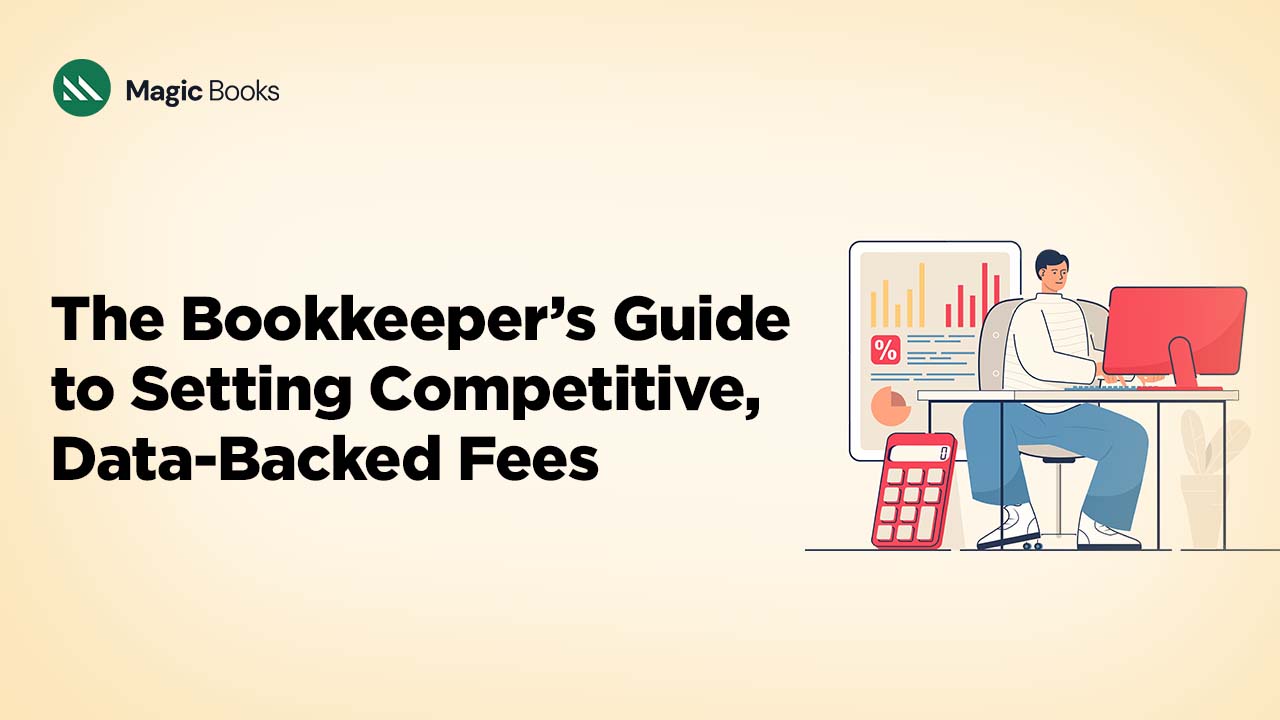When Jane, the owner of a mid-market advisory firm, initially priced her hourly rate at $150, she believed a modest premium above her competitors would do. After six months, with more and more clients, her profit margins eroded and her cash flow constricted. Only by scrutinizing her ledgers closely did Jane realize that she had been consistently under-pricing her service—her actual blended cost per hour was nearer $190 after adding in overhead and ancillary software charges. Accuracy in pricing is not an issue of market positioning; it’s an issue of knowing every dollar you have to spend to deliver your service. By keeping honest, up-to-date books, you come to know your actual cost structure, allowing you to price with confidence and competitiveness.
In this article, we will see the different ways that disciplined accounting makes direct and indirect costs more transparent, transforms raw data into price intelligence, and generates dynamic fee models that protect margins and build client confidence.
Discover Your Actual Cost Structure through Accounting:
In a service company, every expense falls into two wide categories: direct expenses—such as labor hours and engagement‑related materials—and indirect expenses—such as rent, utilities, software licenses, and administrative wages. Proper bookkeeping means classifying every transaction properly so your Profit & Loss (P&L) statements accurately show the actual use of resources by every engagement.
For example, when payroll costs are entered into an accounting system, assigning each entry to its related project or department provides a real-time snapshot of labor expenses. Similarly, bank feeds and the use of custom categorization rules prevent subscription charges—whether for time-tracking software or CRM utilities—from being buried in a broad “Office Expense” category. With the American Institute of CPAs, strict adherence to cost accounting principles allows companies to accurately allocate overhead expenses and determine accurate cost-per-project rates (AICPA, 2025).
Did you know? Properly coded expenses can uncover “hidden” software fees that consume up to 5% of your billable time.
A clear knowledge of your loaded costs provides the foundation for cost-covering pricing as well as your value created through your expertise.
Turning Clean Financial Data into Actionable Pricing Insights:
Month-end accounting processes are designed to do more than appease tax regulators—they also spot trends and variances that will guide wiser pricing. When Acme Advisory compared its quarterly P&L to budgeted expense, it found a 12% variance in software cost, fueled by untracked premium feature additions (Webgility, 2025). By detecting that overrun in advance, they changed their projection and renegotiated vendor agreements prior to cost pass-through to customers.
Monthly financial statements—P&L, balance sheet, and cash-flow statements—are like a narrative: Are the receivables aging? Is the payroll increasing without corresponding revenue growth? Are the fixed expenses flat, or climbing steadily? Forbes Advisor indicates that tracking such as gross margin per service line and average realization rates equips companies to price fees sufficient for competitiveness while maintaining sustainable profitability (Forbes Advisor, 2025).
Rhetorical Question: Did you ever stop to consider how much your “hidden” software fees are charging each client?
The early identification of these trends allows for the implementation of pricing adjustments with minimal disruption, rather than awaiting an unexpected development at year-end.
Creating a Dynamic Pricing Model with Automated Bookkeeping:
Select a Cloud-Based, Scalable Accounting System:
You need to select a solution, such as QuickBooks Online or MagicBooks, that brings bank feeds, invoices, time tracking, and expenses into a unified dashboard. A unified platform avoids data silos and ensures all cost inputs are directly integrated into the pricing model without any aggregation.
Bank feeds and transaction matching automation:
Link your business checking accounts, credit cards, and payment processors to have transactions automatically transferred. Set up auto-categorization rules to automatically assign each line item to the related service or overhead account code.
Merge the Time Tracking and Invoicing Data:
Connect your time-tracking software, TSheets or Harvest, to automatically log employee hours by client or project. Additionally, connect this to automatic invoicing so real-time realization rates are accurately represented. When labor is greater than budgeted hours, your model will update instantly the effect on cost per-project, hence enabling fast price changing.
- Create Real-Time Dashboards to Track Critical Pricing Metrics:
Build dashboards that uncover:
- Cost-per-Project: Total allocated direct and indirect costs divided by hours or deliverables.
- Realization Rates: Billing to Tracked hours Ratio.
- Gross Margin by Service Line: Revenue minus fully loaded cost.
Define Automated Variance‑Alert Thresholds:
Create rule‑based notifications—like a 10% difference between actual and planned labor costs or software spend—that send an email or dashboard alert. By doing so, you can take action in the engagement (e.g., renegotiate subcontractor rates or rebaseline scope) instead of finding out about overruns at quarter‑end.
- Use AI-Based Recommendations:
Implement AI agents that look for transaction patterns and provide category corrections, expense reclassifications, or vendor contract renegotiation options. Early adopters cut bookkeeping time by up to 12 hours per month and have a better cost-structure understanding.
- Adopt Rolling Forecasts and Dynamic Rate Cards:
Use your automated accounting data to generate rolling 12-week or quarterly forecasts, with each new posting updating cost assumptions. Take these projections and turn them into dynamic rate cards that adjust fees according to anticipated cost variations—keeping your pricing aligned with current realities at all times.
- Implement Governance and Staff Training:
Document your automation process in standard operating procedures. Educate finance and project staff in exception handling (e.g., re-routing uncategorized transactions) and interpreting dashboard insights. Clear ownership prevents data drift and ensures model integrity.
- Periodic Model Calibration:
Schedule to compare in detail your dynamic model outputs to actual outcomes quarterly. Recalculate indirect costs like office space and software subscriptions and recalculate burden rates appropriately. What this calibration does is keep your pricing engine finely attuned to both internal cost changes as well as external market conditions.
- Complete the Cycle with Client Communication:
When automation signals a material cost shift—like a sudden 15% premium software license hike—it’s well worth adding your customer proposals or contract renewals with transparent, fact-based rationale. This builds confidence and allows for rate change acceptance, ultimately justifying the value you deliver.
Benchmarking Your Fees Against Industry Standards:
Assessing if your fees are at—or above—the industry average starts by looking at credible, current surveys. In the 2024 U.S. Accounting and Tax Pricing Benchmark report, 57 percent of respondents reported fee increases of 5 – 10 percent would be implemented in 2025, a common strategy of cost recovery and value capture. Independent bookkeepers in the United States, in contrast, charge $30 – $90 per hour, with certified bookkeepers commanding the higher rate. Full-service bookkeeping firms, in contrast, bundle services as monthly fees of $500 to $2,500, demonstrating the impact of scale and specialization on pricing models.
Rhetorical Question: Have you benchmarked your combined hourly rate—direct labor and allocated overhead—against these benchmarks? If your combined current cost is $75/hour but similar companies are quoting $90/hour, you could be under-serving your bottom line.
Synchronizing your accounting information with these outside measures involves significant steps:
- Differentiate between Direct and Indirect Costs:
Use your chart of accounts to classify each expense as direct (for example, project-related subcontractor charges) or indirect (for example, office facility and general software subscriptions). This allows you to calculate an accurate “burdened” cost per service hour.
- Adjust regional and expert variations:
Location and credentials count. Bookkeeping MatchUp says urban companies in pricey cities command $75 – $150/hour, while those in smaller markets are $30 – $60/hour. Credentials also increase prices: certified bookkeepers are $40 – $75/hour, and degreed individuals are over $100/hour.
- Use and Choose Industry Surveys:
Select a minimum of two authoritative sources—e.g., the Ignition benchmark and NACPB fee survey—to compare. Utilize your automated bookkeeping categories to strip out anomalies (one-time expenses, pass-through vendor expenses) so your comparisons are not skewed by outlier line items.
- Translating Insights into a Tiered Pricing Strategy:
Loaded with benchmark data and your rates, develop pricing tiers (e.g., Basic, Standard, Premium) closely tied to industry norms and your firm’s unique value proposition. Provide transparent rate justifications—”Our Premium product offers X, Y, Z, consistent with the industry’s top quartile of fees”—to facilitate client approval.
Best Practices for price discipline:
Pricing discipline starts with regular and punctual invoicing practices. Allocate a consistent block of time—preferably within a window of ten days following each month-end—to reconcile bank statements, balance vendor invoices, and verify posted transactions.
- This “close cadence” keeps errors in posting small enough from escalating into large cost misallocations that can skew your service-line profitability. Reconciling in a timely manner, you keep your P&L and balance sheet up to date with the most accurate cost information, providing a sound basis for pricing on actual costs instead of estimates.
- No less important is a monthly review process that engages finance, operations, and client-service leadership. In each session, the groups should review the actual-to-budget variances at the overhead and project levels. The Journal of Accountancy’s CAS Benchmark Survey, in a survey of top-ranked advisory practices, found that firms with disciplined, cross-functional review cycles had a 25% higher likelihood of charging high net client fees per professional—partially because they were able to catch cost overruns early and price for them before margins fell.
- Standardization is yet another pillar of pricing discipline. Create a standard chart of accounts and expense-coding schema so that all members of your staff classify costs in the same way. From software subscriptions to subcontracted labor and office overhead, precise coding allows you to slice “hidden” burdens—such as incremental add-ons to high-end service plans—without fumbling around manually. FreshProposals reports that companies with strong coding frameworks can make the shift more easily to value-based or tiered pricing models because they can cut and slice cost data by service line with confidence.
- Automation also makes price controls more efficient. Use the alert and dashboard features of your accounting software to notify when project expenses are over pre-determined limits, or when realization levels fall below target. For example, having an alert of labor-cost overruns over 10% against budget allows you to offset imbalances during the engagement—instead of finding them in next quarter’s financial reports. CPA Site Solutions reports that companies that have automated variance alerts as part of their process are experiencing 30% quicker response to movement of costs, with less write-offs and more successful client negotiations.
- Lastly, institutionalize a quarterly fee review comparing your existing fee schedules to both your new cost structure and industry-standard rates. Utilize authoritative surveys—like the NACPB Fee Survey and NALP rate guides—to check whether your new rates continue to be competitive. Then, communicate any rate increases to clients, correlating increases to documented cost changes. This disciplined rhythm—based on accurate bookkeeping, collective review, normalized coding, and automation—insists your firm not only preserves healthy margins but also establishes credibility by illustrating that your prices are backed by data-driven facts. By embracing these best practices, your business can transform bookkeeping from a compliance function into a strategic pricing tool—thereby ensuring that every rate you charge is linked to real costs, market expectation, and value you are delivering.
Conclusion:
Systemized bookkeeping increases the integrity of pricing, justifies profit margins, and builds client trust. By auditing your finances for the last half-year this week, you will uncover hidden expenses and pricing choices—like Jane when she adjusted her service rate to accommodate real costs. The result? A thriving practice and clients who value your skill and integrity.



